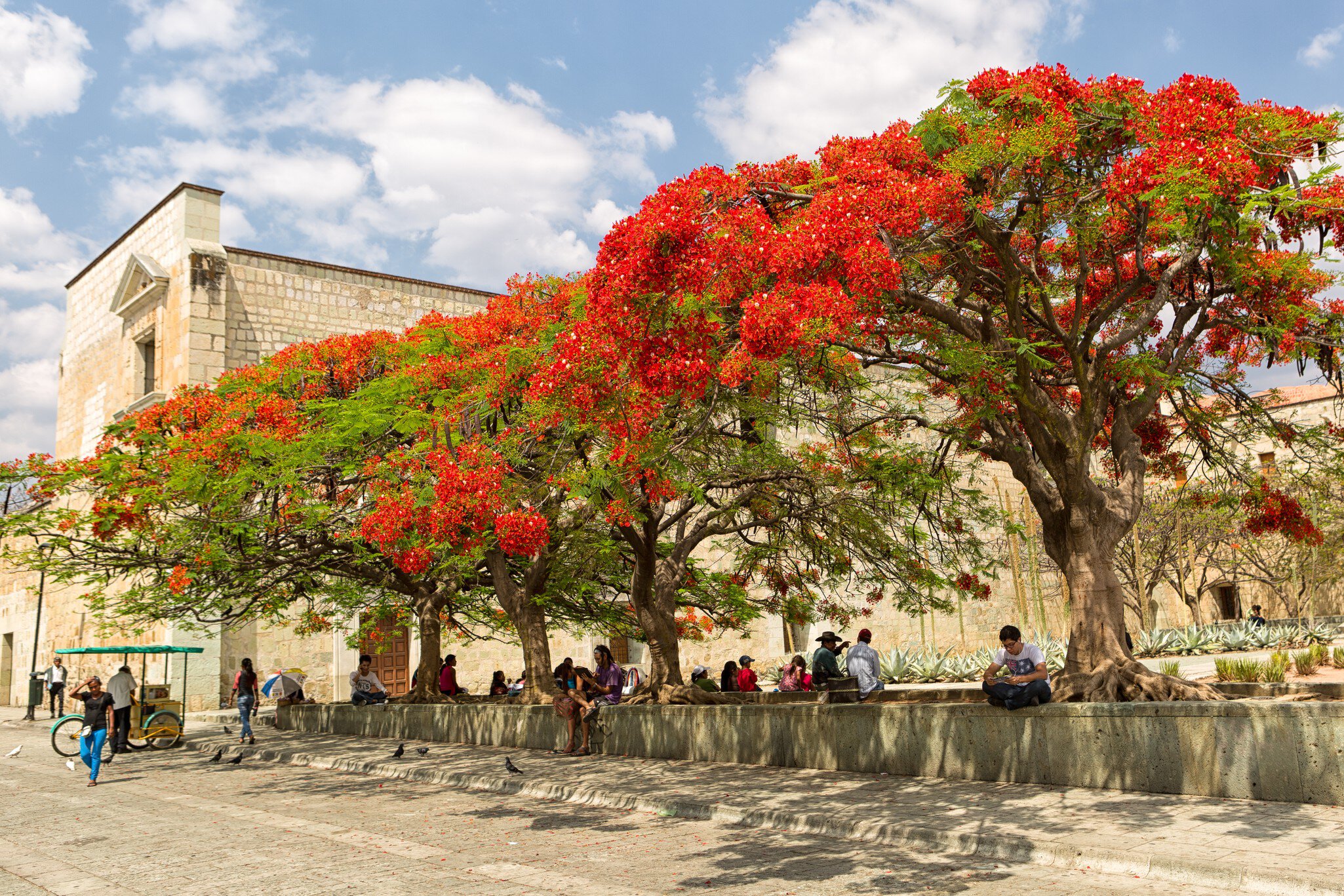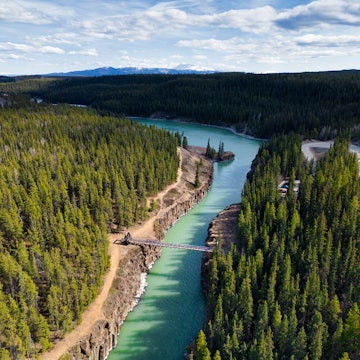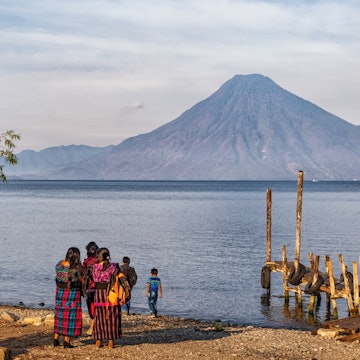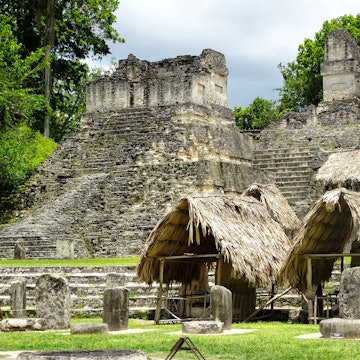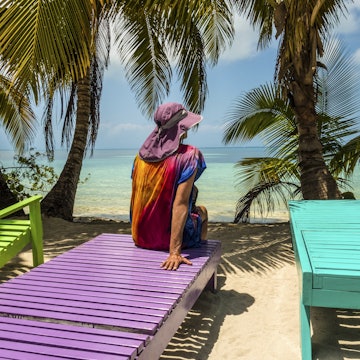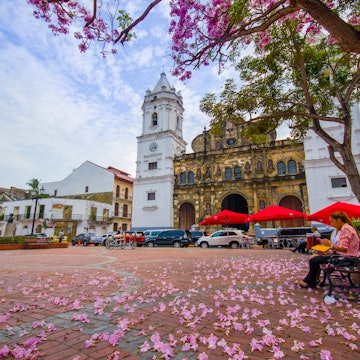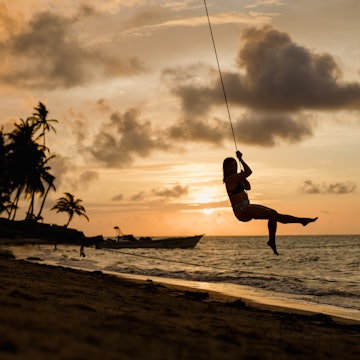
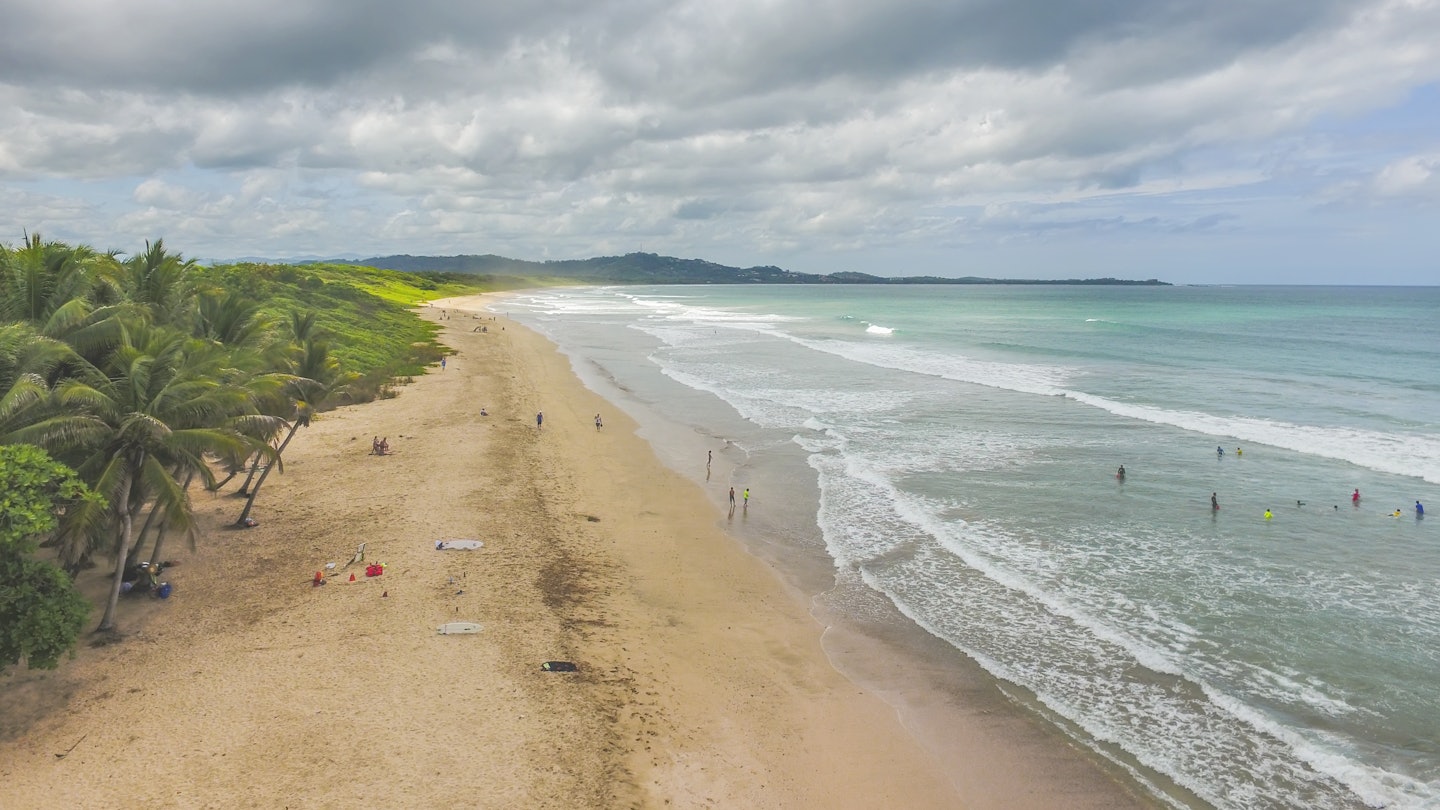
Make your way to these Central American towns. Getty Images
Central America stands as an enduring favorite for eco-adventures: seven countries spread across a vast isthmus are a treasure trove of geographical wonders.
Scores of active volcanoes, visually raucous corals, high-altitude lakes, endemic cloud forests, and black sand beaches are all landscapes a major draw.
Locals are loquacious in all languages – from Spanish and English to Garifuna and Miskito. Streets are punctuated by vestiges of colonialism and Spanish conquistadors, while burgeoning food scenes beckon as culinary capitals in their own right.
For your next trip through the region, these pockets of can’t-miss urban oases feel most like Central America’s heartbeat, from UNESCO-protected cities to tiny towns.

1. Antigua, Guatemala
Most come to Guatemala for a heady mix of highlands, Indigenous heritage or natural wonders – and it’s all romantically packaged in Antigua’s cobblestone streetscapes.
A volcanic trifecta hugs its perimeter, including ever-erupting Fuego and the hikeable Acatenango, while lush rooftop courtyards, traditional huipiles and painted tiles tint rubbles from century-defining earthquakes.
Today, the former capital of Guatemala boasts its own cosmopolitan definition – nurturing microbreweries, boutique hotels, a strong café culture and language schools that catch everyone from expats and tourists to weekend-warrior city dwellers.
What can I do?
Antigua is flush with religious sights, like Convento de Capuchinas, Iglesia de San Francisco, Iglesia y Convento de Santo Domingo and Iglesia Merced, while the comprehensively defines Guatemala in dynamic detail, just next to Central Park.
Melt into the handwoven textiles of women-led cooperatives against mounds of produce at its mercados, or over mezcal at – the perfect aperitif to shucos (Guatemalan-style hot dogs) as late-night sidewalk grub.
During Semana Santa (Holy Week), alleyways and plazas shed traffic-free brags for fluorescently dyed sawdust alfombra carpets and solemn processions instead. Antigua’s celebrations are a spectacle for locals alike, so staying outside of city limits is far more accommodating.

2. LeĂłn, Nicaragua
Granada might be the polished tourism darling of Nicaragua, boasting titles like the colonial city in Central America, yet LeĂłn edges just ahead in their centuries-long rivalry.
At first glance, Granada’s palette is like a box of crayons compared to León’s whitewashed architecture – but the draw of this young-at-heart university city lures with poetically-charged (liberal) ideologies, woven into passionate conversation by every creative you’ll inevitably meet.
Add in its proximity to both the coast and the Cordillera Los Maribios volcanic range running parallel to the Pacific, and you’re won over.
What can I do?
Take a walking tour from shady Central Park for standout city sights, including Iglesia la RecolecciĂłn and the university itself, .
Lean into León’s rough-around-the-edges feel at Mausoleo de los Héroes y Mártires alfombra – it may be half a century after being a Sandinista bastion, but unmistakable FSLN flags juxtaposed with Instagrammable murals are a glimpse into the city’s modern grunge.
Save sunset for rooftop access at the end of the Catedral’s spiral staircase to count off colossal summits within eyeshot, behind paint-peeling, crucifix-adorned domes.
Grab fritanga nearby for Nica’s version of BBQ, or a breezy beer at , for a menu that slips into Cuban syncretism.

3. Panama City, Panama
The Americas’ major hub – from regional flights to cross-continental trade in its eponymous canal – makes a case for staying longer in its cityscape alone, for much more than a gateway to getaways.
Bounce between its UNESCO-attested Casco Viejo and Panama Viejo districts for rum-slinging history, toward skyscrapers as pretty as they come with the likes of Central America’s (70 stories) and the winding El Tornillo, or deep within its urban rainforest to the 232-hectare .
What can I do?
Glitzy cabarets and nightclubs make Panama City an exciting stopover, but skip sleep in favor of speakeasy cocktail bars and rooftop scenes wakening after 10pm.
Bartenders at get crafty with sugarcane-based seco and stories of Casco Viejo’s preserved courtyards below; epicureans can search its hidden streets abuzz with experiential, although inherently Panamanian, unmarked chef’s table.
Drop in any night to ’s neoclassical stage, entertaining since 1908 (though usual beats now range anywhere from silent EDM discos to women-led concerts), or spend your daytime in Paseo de Las Bovedas’ market littered with molas (decorative blouses) before lingering beneath the still-standing 300-year-old Arco Chato of its crumbling Convent of Santo Domingo.

4. Suchitoto, El Salvador
Sweet Suchi’s spirit is endearingly quiet, but growing as the charming mountain town embraces its rich antiquity and craftsmanship.
Locals first reclaimed their riverstone-embedded roads and kaleidoscopic Spanish heritage homes from abandonment after a dozen years of civil war ended in 1992. Creative outlets have breathed new life and purpose through art galleries, museums and kitschy boutiques in between.
Muses abound in this “place of flowers and birds,” from Lake Suchitlán on its eastern perimeter to the textures of terracotta tiles and clay shingles in town.
What can I do?
Examine every inch of El Salvador’s first capital in earnest, starting with an Indigo workshop at , extracting natural dye from native Xiquilite plants as indigenous Pipils did.
Centro Arte para La Paz is another exploration of Suchi’s (new) identity, housed in an old convent as an eclectic third space for culture, community and creativity.
From there, fan out on foot to GalerĂa de Pascal, Museo de Los Mil Platos y Mas, Museo Casa de Alejandro Cotto, and the faux post-colonial Santa Lucia Church.
Grab a coffee at the youthful nonprofit afterward, or sink into the town’s alternative knack at for live music.

5. Liberia, Costa Rica
Guanacastecos are fiercely singular, even from the rest of Ticos. In 1824, the entire province was bold enough to secede from Nicaragua, and relics of a bygone society with cultural disparities remain.
Liberia, or “La Ciudad Blanca” for its whitewashed adobe colonial homes and once gravel streets, is the entryway to both the country’s Golden Coast and Riviera for nonchalant surf hubs and thermal pools.
Yet the North Pacific’s administrative capital is hardworking (another sabanero stereotype) to beef up its offerings as Costa Rica’s northwest star in the “Dry Forest,” blending colonial charm with cowboy country.
What can I do?
Aside from its Fiestas Civicas every Spring or Annex Day in July, head to Museo de Guanacaste, military barracks-turned-mainstay, for rotating cultural and art exhibits, before seeing its chief landmarks: churches.
The Catholic Iglesia de la Inmaculada ConcepciĂłn is Liberia’s main house of worship, but Iglesia La Ermita de la AgonĂa – though plain inside – hums with a bit more intrigue given its 1865 construction.
Refresh with a cold pipa (coconut) from a pushcart in Central Park, or brace the Toros a la Tica, bloodshed-free bullfighting, still practiced in these parts. A steak dinner is a must; and do it best.

6. San Ignacio, Belize
If there’s a Venn diagram of an eco-adventurer’s soft spot and artsy backpacker’s scene, then San Ignacio is the intersection.
Past flanking patchwork cattle pastures and rolling hills from the Guatemalan border, Yucatec Maya heritage is steeped in the flavors, sounds, and urban landscape here – a legacy from El Cayo’s first inhabitants. Add in modern cowboy culture, then ride into the sunset of Belize’s west.
What can I do?
Misty mornings in this nook of Belize’s Maya Mountains grip in March, shotgunning the La Ruta Maya canoe marathon and Easter homages of Catholic authority.
Casinos draw obvious night owls, but try live music elsewhere (like rock-and-roll, hostel-turned-exhibit métier Wednesdays and Fridays).
A taste of this twin town might be grilled (nearby ranches supply San Ignacio’s signature Creole-Mestizo spiced BBQs), but pull a chair for any cuisine in San Ignacio’s namesake daily market.
Vivaciously colorful produce, spices and crafts are the country’s largest on Saturdays, and presents all of the above with comal-to-plate masa and nature-honeyed smoothies. At the edge of town, muse over Cahal Pech’s clutch of artefacts and temples as one of the lowland Maya World’s oldest, first abandoned in the .

7. Santa Rosa de Copan, Honduras
As galvanizing as the Copán flower, this is a town built on tobacco, coffee, colonial history, and – at 1,150m – mountains.
The just-as-pretty Copán Ruinas typically overshadows Santa Rosa, but there’s plenty of Spanish-crown 18th-century history to allure between colorful tiled-roof homes, plus cafes and cocktail bars to gush over on every cobbled corner – signature Timoshenko in hand for the latter.
What can I do?
Harvest season’s height in October equals roasting your own bags at , but coffee snobs can settle into cafes by the score serving upcycled women-made crafts (like the baristas of ) to a specialty civet cup at or Santa Rosa’s famously good coffee liqueur, any day.
Study Santa Rosa’s namesake Cathedral’s Baroque architecture in the daytime, but at night, watch its domed structure glow: it doubles as a (pristine) white screen with community films.
For nightlife, pour into the Galel Sports Complex alongside Cerrito fans, or over a beer, bar-hopping to favorites like or Jaguar House. August is littered with celebrations to the town’s Patron Saint, like parades in its historic center and food festivals of generational wealth in the form of atol chuco, totopostes and, of course, baleadas.

